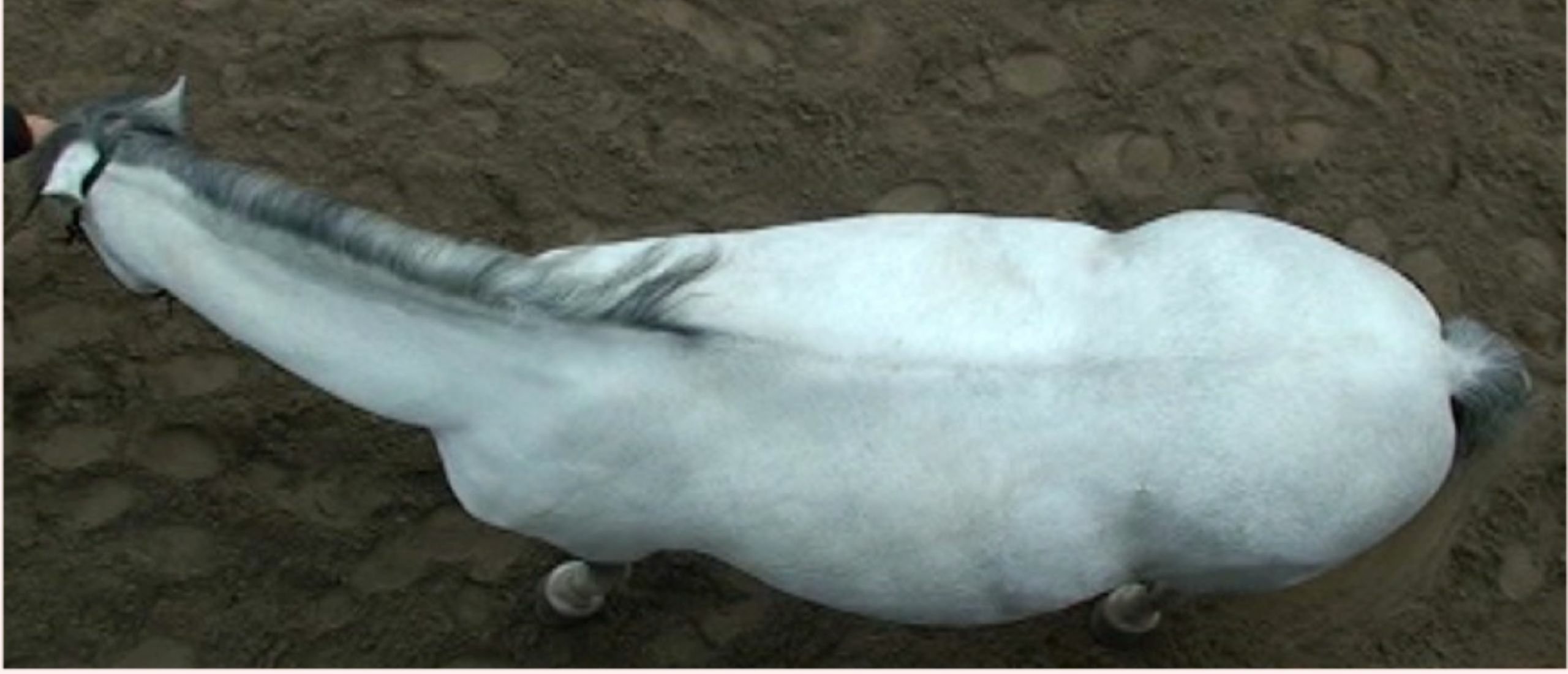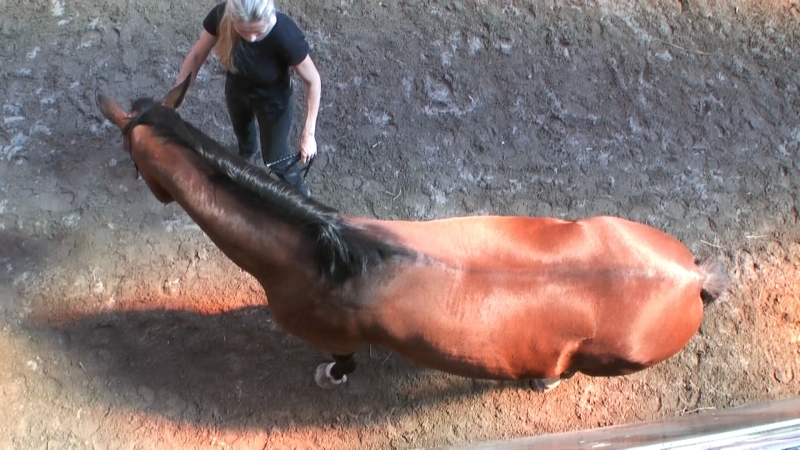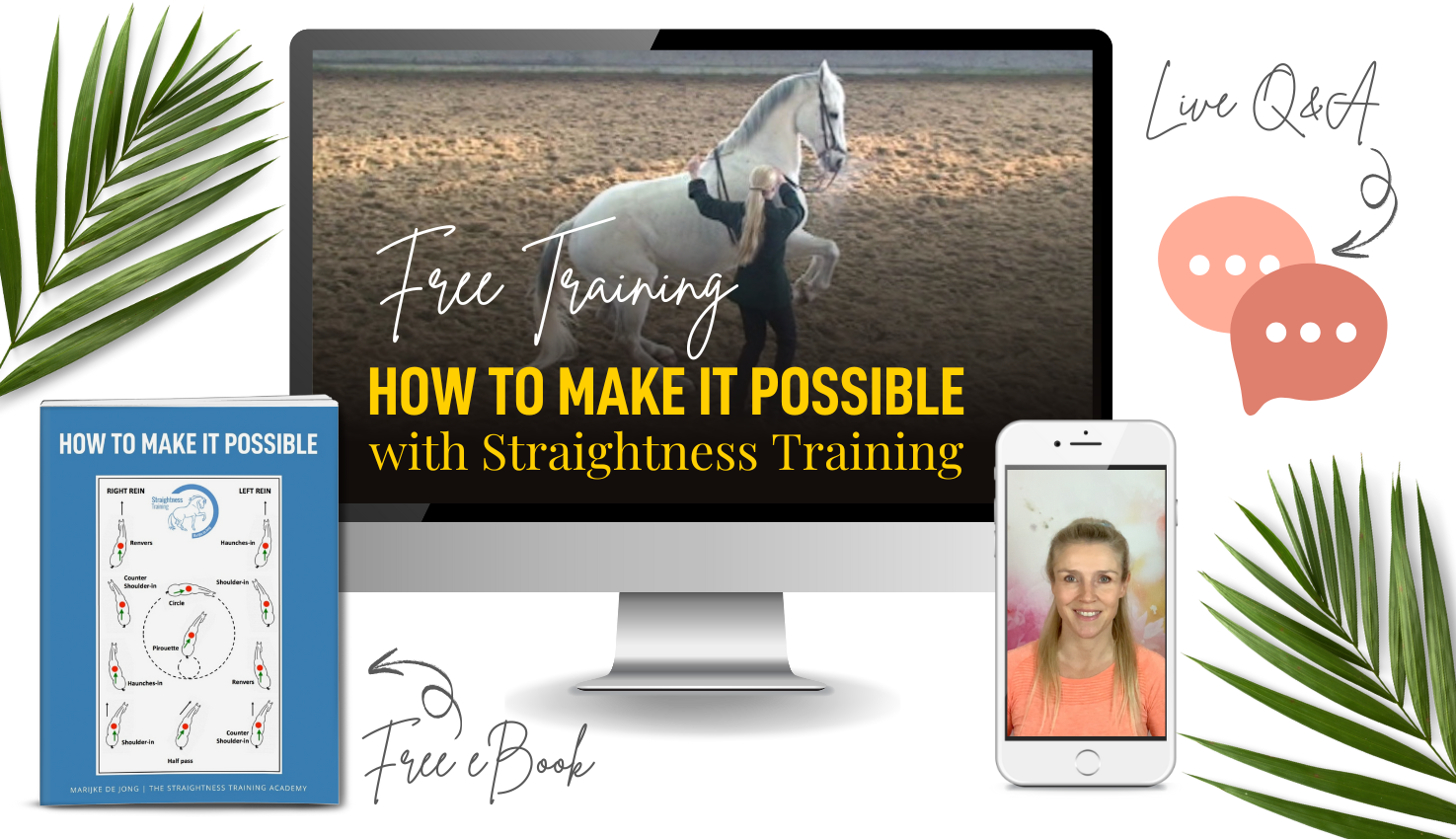
Stelling & Bending
Stelling & Bending is the second exercise that you're going to teach your horse in Straighhtness Training.
In Straightness Training, your horse is strengthened through a logical system of progressive exercises.
This exercise is asked while standing still and it is an amazing tool to explore your horse’s natural asymmetry and to start creating balance, suppleness and focus.
Definition

Stelling is the placement of the head in relation to the first neck vertebra.
Bending is the lateral bending of the body from the first neck vertebra (atlas) to the vertebrae in the tail.
Now the flexibility of the spine differs in each region: the neck is the most flexible part, followed by the lumbar region. Bending in the rib area is hardly possible and the croup vertebrae are connected and cannot bend at all. Therefore some vertebrae and parts of the spine also need to rotate and flex to create the ‘illusion’ of lateral bending.
However, ‘lateral bending’ is still the most useful image and metaphor for rider and trainers, because when the horse ‘feels’ and ‘looks’ as if the horse is evenly bended from head to tail, he turns in a balanced way.
Goal
‘Stelling & Bending’ prepares your horse for groundwork and longeing, because groundwork and longeing requires the horse to be able to bend equally to both sides.
Because of the natural asymmetry horses, tend to bend more easily to one side. Thise execise helps the horse to also bend to the difficult side, by stretching the short muscles.
With the cavesson you can influence the head and spine of the horse and the stelling and bending, both to the left and to the right.
You can see that the bending of the horse works through its entire spine, and that the hip on the hollow side of the horse comes forward.
It is easy to under-estimate the standstill exercises ‘Forward Down‘ and ‘Stelling & Bending’, but when they are done correctly, they are essential to the training process.
Teaching the exercise to the horse
Ask for stelling and bending little by little. To do so you apply pressure on the longe line.
- Close your hand around the longe line and ask for stelling and bending.
- The horse yields at the moment you apply pressure.
- The instant the horse yields to your request, open your hand and release the pressure, and reward the horse.
When done correctly, with the essence in mind, you can see that the horse bends through the neck and its entire body. This results in a tiny little forward movement of the inside hip.
Timing & dosing is key!
The better your timing and dosing of pressure and release, the better the horse will understand and execute this exercise.
Pitfall of the human being in the use of the pressure are the following ways of applying pressure:
- Too long
- Too much
- Sudden
- Steady
As a result the horse will either go against your pressure (bringing the head up) or ignore your request (resisting in the same position) or he gets out of balance (the center of mass shifts forward) and therefore he starts to move.
So adequate timing and dosing of the pressure is important, but even more important is the release of the pressure!
So if you don’t get the expected result, change your approach, and refine your pressure/release technique.

